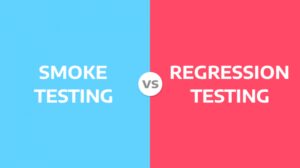When using any application, we always want speedy responses in real-time as the end-users and demand that the developers implement it. This prompts the companies to take constant note of their product’s consistency and efficiency.
Without monitoring performance, you will have no way of knowing how useful your app is. This will result in directionless goals and a confused and aimless customer-company relationship. The overall objective of synthetic monitoring is to gauge users’ emotions and attitudes towards your products or services.
However, it would take the software developers a few more approach combinations for testing and monitoring. They should have a very detailed understanding of applications after they’re released, and synthetic testing is one of such approaches adopted by other service sectors.
Synthetic testing is monitoring how customers are able to use your software in carrying out typical onsite transactions.
In our article, we will demonstrate how synthetic testing works, how it compares to Real User Monitoring, and the value it brings to your business.
What is Synthetic Monitoring?
Synthetic (testing) monitoring concentrates on testing web software and sites’ working efficiency through various devoted test engines.
With or without site traffic or congestion, this can be performed by simply uploading the required scripts to replicate the end user’s behavior through the same process.
These scripts intended to simulate workflow and interaction are developed beforehand, then deployed to be initiated immediately after the modified code structure is released for production.
| Recommended: Learn the performance metrics to track when testing software. |
How Does Synthetic Testing Work?
Before we go on babbling about synthetic testing and its importance, let’s talk about how it works.
To begin the process, automatic end-user simulations are uploaded to the software to closely emulate the operations that the average end-user would most likely perform.
This can be done from within the system’s protective Firewall to ensure that the internal machines’ efficiency remains top-notch.
It can also be from without the protective Firewall to give proper feedback on how readily valid it is on a much broader and global scale, especially to users with Virtual Private Networks.
The uploaded scripts and automation then serve as tools for surveillance and recording feedback as they are triggered periodically -e.g., after every half hour(30 mins).
They can either be triggered from one dedicated source in the form of a synthetic testing user browser.
Or from various user browsers, pinned at different server areas (possibly with VPN), to have a broader and more efficient calculation on how the software performs when users from other geographic areas are logged in.
Doing this provides a stable and reliable foundation for keeping the software efficiency in check and performance of the servers, round the clock, notwithstanding daily user interactions.
The more end-user test simulations are contained in the program, the easier it gets to find out and curb possible problems that customers may encounter.
Testers can verify these issues while performing in secluded test conditions before passing the modified functions as good and during periodic offline upkeep.
Although these web simulations take up such a small amount of resources and time, it’s also important to note that it fails to give a perfect depiction of the client’s experience in every case.
This is because dynamic browser patterns are impossible for the simulated scripts to maneuver. This doesn’t dispute the fact that the synthetic monitoring and tests provide the best foundational means of tracking application performance notwithstanding the period or situation.
Still, even at that, every single aspect is not fully covered. The test may not bring up any pending problems, but most likely, the end-user may be experiencing some. This effect is primarily due to factors like an improper simulation of:
- The geographic region
- Supported bandwidth
- Operating Systems
- Incomplete test operations and
- Making use of one or more of such features.
To sum it up, these tests only suggest possible client procedures and experience but should not be taken as decisive and final.
| Recommended: Learn why you need automated browser testing. |
Issues that Can be Solved by Synthetic Testing
1. With the help of synthetic testing, problems of performance and efficiency are realized and curbed. Therefore, it reduces any possibility of the application lacking optimal performance due to the inconsistency in the client specified account and that from a real-life position.
2. It is also useful in utilizing allocated resource costs. This is made possible when passing valuable data to the client, on server values and overall system performance, and using procedures with a broader impact on end-user operations and breakthrough opportunities.
Why Synthetic Monitoring?
1. Be able to find and curb problems before they get to the end-user
Synthetic testing helps you monitor and mimic operations performed by the end-user to run similar tests and give a 1st person point of view from within or outside the Firewall.
It anticipates any lag in the application Interface, browser, or device apps’ functionality or readiness and immediately notifies the preceding team to take action.
This undoubtedly gives ample Data, Time, and Space to note, apprehend, and tackle the issue’s foundation, with professionals’ help before it’s too late and noticed by the end-user.
2. Benchmark Referencing
This testing puts the power in the developer’s hands to break the limitations set by geographic regions and bandwidth, enabling you to track the Programming Interface and Software build on any turf you choose.
Depending on how often you use and how efficient the synthetic tests and tracks are, the information accumulated from it can be employed as a benchmark to gauge software performance and pinpoint where improvement is recorded or needed and develop further improvement techniques. This can also be compared against past personal deeds or that of competition.
3. In preparation for periods of high traffic or a new market
With synthetic testing and tracking, it becomes possible to track and analyze sections of the software or site that isn’t yet open to the public view and test under preferred conditions.
It becomes possible to drive virtual traffic to such areas to make sure of validity and capable efficiency.
When breaking into a new market, most likely in a new location, this testing analyzes the software’s potential performance in the region. It brings any foreseen problems to light before it can reach the final customers.
4. To monitor complex processes and transactions
When looking to track and improve complex software processes and provide a top-notch user experience, it will be ill-advised to check and rely only on basics like the runtime and the programming interface, and software’s reliability.
This testing gives an edge by letting you track such processes as signing up, filling out a form, and even running an item purchase process from a virtual location of choice to verify the level of assimilation and comprehension by the software.
At this point, it’s safe to evaluate the statistics and set up an adequately tailored blueprint for improvement.
5. Measuring SLA
When it comes to SLAs, everyone can agree that it’s not in any way a one-sided affair. Both the clients and developers have a lot to gain, so long as both parties keep the SLA measures.
The synthetic testing broadens on the software’s already known aspects on the developer’s part and sheds more light on efficiency and effectiveness. And with such superpowers and information, developers can always have more possible standards to look up to and avoid surprise issues.
6. Holding third-party developers accountable
Many new era software use several third-party plugins, ranging from payment procedures to analytics and intelligence gathering.
These plugins undoubtedly have a lot of positive impact on the application functions, and so does the synthetic testing with the third-party developers. Synthetic testing and monitoring help both parties to keep an eye on activity levels, making sure it stays up to par.
Keeping to the service level requirements and performance levels mean that the vendors should be held accountable if anything goes wry
How is RUM Different?
RUM stands for Real User Monitoring. Although similar to synthetic testing, this technique is quite different because to point out the pending issues on the ground.
It only makes use of real-time information gotten from real users navigating the software in question.
The RUM technique usually has no impact on how the software behaves because it is agentless and not synchronous. Information is taken in a not so specified order. Usually, it doesn’t take many code lines to collect the relevant information to be used by you.
RUM and Synthetic Testing are almost the same without further scrutiny, but they have some distinct differences in truth. One of such differences is that RUM can only be used on software already having real user traffic.
As the name implies, that is the only time you can get relevant information. Whereas Synthetic Monitoring is best for software with lesser or no traffic, making it a more popular choice. But if your software already generates as much traffic as can be used on real user monitoring, it would be a better pick.
Tips on Selecting Proper Synthetic Testing Tools
– It should be easy to operate and use. Some tools allow for coding and writing scripts, whereas others save a lot of time with recording and playback.
– A proper tool leaves the power to broaden the scope of work in the user’s hands, giving you the ability to build more rigorous workflows and even additional stages.
– A proper synthetic testing tool should work hand in hand with the most complex software specifications.
– Its test scripts should also possess the capabilities that can be reused or recycled when needed.
– It should be able to cross-check any and every data-driven test scenario.
– It should be able to curb and take care of false alarms as problems may come from quirky bugs, meager codes, etc.
– A proper synthetic testing tool should work great on different locations, measuring delay periods and issues with loading.
– It should be able to curb unnecessary expenditure, like in the case of doing a retest for a false alarm.
– A good tool for synthetic testing possesses the ability to configure Mobile Messaging and even Email services.
– A useful tool should let you simulate tests on various device operating systems and different browsers. This is because other end-users, nowadays, make use of software and applications on multiple devices.
Conclusion
In any case, software end-users require and need to be given a smooth sail while surfing through the web applications. And to achieve this, the performance and activity levels need to be watched often. A clear cut strategic plan, complemented with a proper synthetic testing apparatus, will see if any related issues are dealt with.
Efficient synthetic monitoring doesn’t occur naturally. It is the result of teams of performance testers applying the best practices and positive traits. One of the most important of these traits is expertise – having and using practical knowledge concerning software testing.








